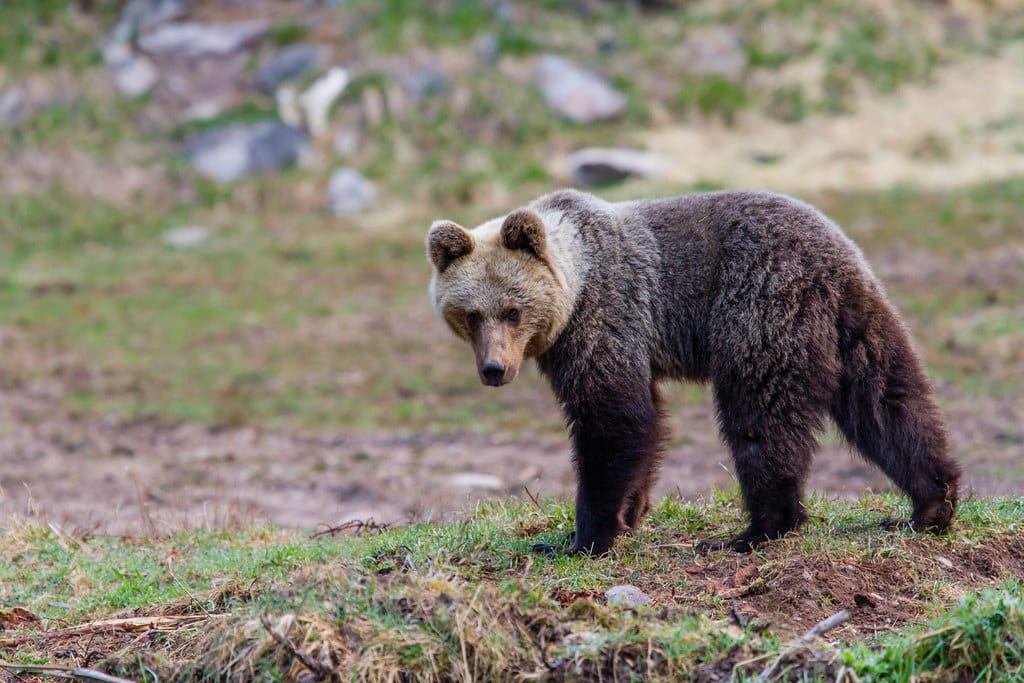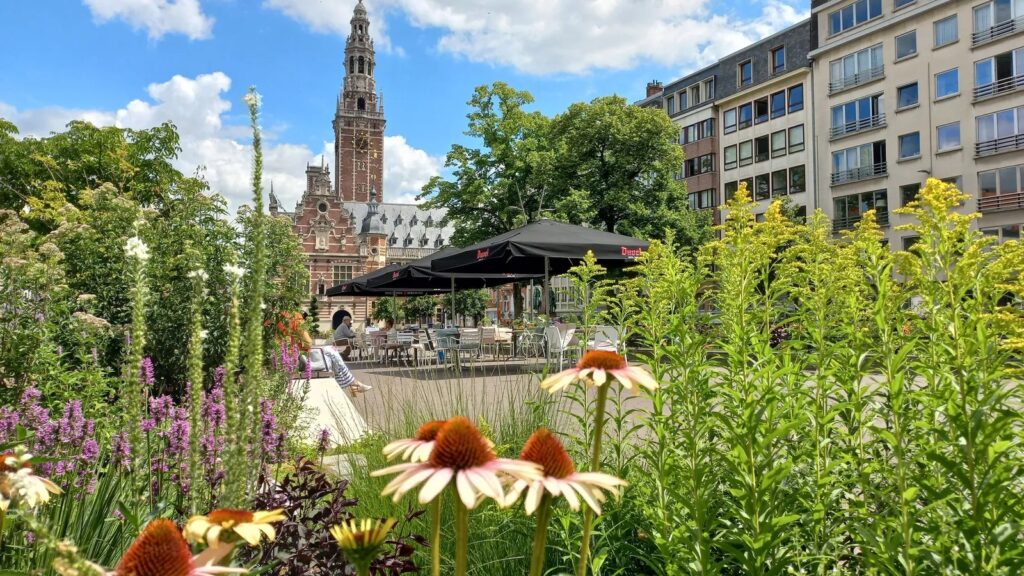Wondering what went right this week in the conservation world? We’ve got you covered with our Conservation Optimism Round-Up! We are collating stories of optimism from around the globe so that you never miss your dose of weekly motivation.
(Featured image credit: Paul Appleton/Flickr)
1. Saving the Bears of Abruzzo
“A subspecies of European brown bear that only lives in the Apennines, Marsican brown bears like to roam, and adult males need a vast area to breed successfully. It is therefore important that their territory not only remain safe, but that it increases. The problem, Cipollone said, is that outside the national parks, the bears have no legal protection. So he is building a movement of people who care enough about the bears that they can roam beyond the parks, safely. “Salviamo l’Orso will help make people aware of the needs of bears and give them space,” he said.”
“We aim to rewild an area of more than 500,000 hectares and Salviamo l’Orso will help make people aware of the needs of bears and give them space." https://t.co/J2XGVpPEc6 #ConservationOptimism #Rewilding
— Citizen Zoo (@CitizenZoo) March 5, 2024
2. The cities stripping out concrete for earth and plants
“The idea of depaving, sometimes known as desealing, is a simple one – replace as much concrete, asphalt and other forms of hard landscaping as possible with plants and soil. […] Proponents say depaving allows water to soak into the ground, which reduces flooding in times of heavy rain – aiding the “sponginess” of cities. Native plants help wildlife cling on in urban spaces, and by planting trees you can increase shade, protecting residents from heatwaves. Injecting city streets with greenery may even improve people’s mental health, too.”
In this article from BBC, find out more about the movement to replace concrete with nature in urban spaces, and hear from the people powering these initiatives in their cities – including Ontario, Canada; Leuven, Belgium; and Melbourne, Australia.
Image Credit: City of Leuven
3. How American cattle ranchers are helping to save Western grasslands and birds
“Grasslands may be the most endangered habitat in the United States, with only 1 percent of the native prairie remaining. As the vast landscape is paved and tilled, Western Meadowlarks, Sharp-tailed Grouse, and other species dependent on the rich ecosystem are disappearing. To stem those losses, a new initiative is helping ranchers restore the large swaths of prairie where they graze cattle.
Over 100 ranches, spanning nearly 3 million acres nationwide, are managed for birds as Audubon Certified bird-friendly lands, having met program requirements centering on habitat management, environmental sustainability, and animal welfare. This includes 15 ranches and a combined 614,000 bird-friendly acres in Colorado.”
Grasslands might be the most endangered habitat in the country. @audubonsociety conservation ranching program is working to help ranchers restore large swaths of prairie, benefiting the bird species that depend on this rich ecosystem.https://t.co/Ebg7GRJ8U2
— UN Biodiversity (@UNBiodiversity) March 9, 2024
4. Rare shark spotted for the first time in Panama’s Eastern Pacific
“In May 2022, during a submarine expedition to the Cordillera de Coiba seamounts in Pacific Panama, a remarkable discovery unfolded: the sighting of twelve prickly sharks (Echinorhinus cookei), a rare bottom-dwelling species. This marked the first documented living evidence of the species in Panama’s eastern Pacific region. […]
“The sighting of the rare prickly shark aggregating on Panama’s seamounts is a momentous find, of unique ecological significance, an observation that not only deepens our understanding of shark behavior but also underscores the importance of protecting such unique habitats for future conservation efforts of this species,” said Stefanie Kaiser, co-author from the Senckenberg Research Institute and Natural History Museum.”
Rare Shark Spotted for the First Time in Panama’s Eastern Pacific.
— Blue Planet Society (@Seasaver) March 10, 2024
The elusive prickly shark was observed during a submarine expedition to the depths of the Cordillera de Coiba seamounts, a biodiversity hotspot and marine protected area.https://t.co/pjTMzDnle7
5. UK Government adopts new regulations for hedgerows, protecting biodiversity
“The regulations will support the efforts of many farmers already carrying out vital work to protect hedgerows, providing important ecological benefits including wildlife habitats, slowing soil erosion and water run-off, supporting crop pollinators and absorbing carbon.
Environment Minister Rebecca Pow said: “Hedgerows have long-shaped our beautiful countryside and provide homes for a huge variety of birds and wildlife, while delivering clear benefits for water, soil and the climate. Our consultation showed just how valued our hedgerows are by farmers, the public and environmental groups alike, and these regulations will mean we can all reap the benefits they bring for generations to come.”
Hedgerow regulations to be brought into law to protect wildlife https://t.co/U0N6dYTASF
— The Game & Wildlife Conservation Trust (@Gameandwildlife) March 5, 2024
6. Bald eagles seen nesting in Toronto for first time in city’s recorded history
There are new wild residents in the city of Toronto, Canada: “a pair of bald eagles are nesting for the first time in the city’s recorded history. Their presence underscores the dramatic return of a bird nearly pushed to extinction and of the improving health of Toronto’s sprawling green spaces and waterways.
“For decades, we’ve invested heavily in ecological restoration work. And finally, it’s paying off,” said Karen McDonald, who works at the Toronto and Region Conservation Authority’s restoration and infrastructure division. “These eagles are a testament to that: if we didn’t have healthy waters and a healthy food web, I don’t think they’d be here.”
[…] Two years ago, an angler caught a 42-inch, 20-lb muskie in the city’s harbour – the first time the predatory fish had been found the area in more than three decades. Northern river otters were once driven from the area. Now, a pair has been spotted traveling from park to park, their five offspring in tow.”
Image Credit: John Nishikawa, volunteer at Toronto and Region Conservation Authority (TRCA).
7. The Small Community Group Restoring Nature in their Neighbourhood
Starting in 2018, a small community group in Warndon Villages, Worcester came together to organize a few guided nature walks in their community. Since then, they have collaborated with their local city council to restore neglected scrubland into thriving spots for local nature, and became a registered charity in 2021.
In this short article, the co-founder of the Worcester Environmental Group (WEG), Paul Snookes, shares a few lessons they have learned in helping their local community thrive in a flourishing natural environment!
Want your council to do more to restore nature – to benefit people, wildlife and planet? This inspiring story shows how a small community group did just that, with ten tips to help others:https://t.co/pDEhZkVns5#biodiversity #ClimateAction pic.twitter.com/JCqELIlXuq
— Little Green Space 🐝 (@LGSpace) March 3, 2024
Have a story to share for our weekly round-up? Use #ConservationOptimism on Twitter, Facebook, LinkedIn and Instagram!




